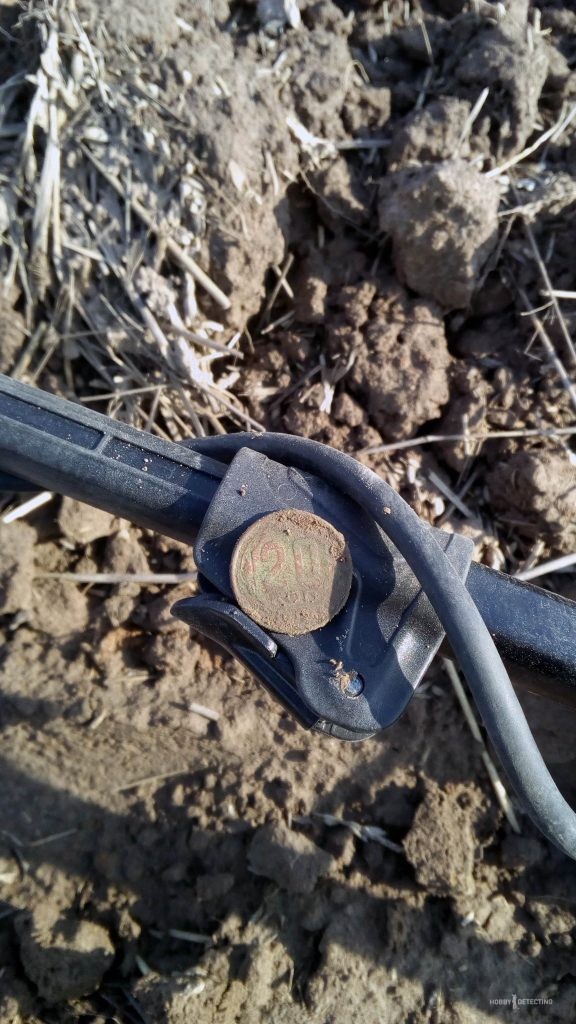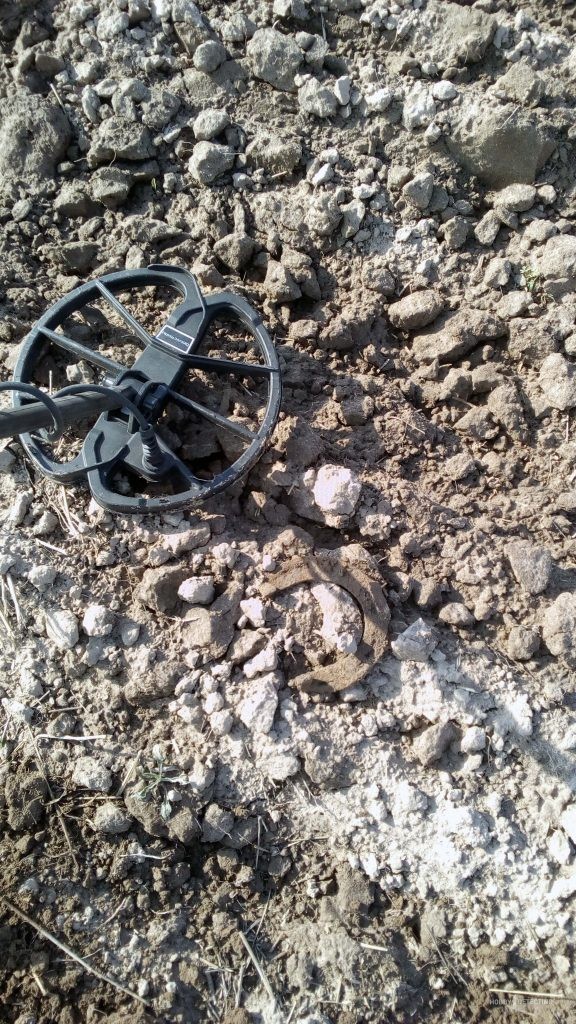Budget metal detector, garbage test
Why not? So, should you take a garbage test with a budget metal detector? And, not just carry it out, but do it with a scientific and systematic approach. Moreover, even write down a mission and a super task for testing.
So.
What motivates us? Purpose of the experiment
I remembered, on occasion, an old video by a top YouTuber. This blogger is walking through a plowed field and praising a new device from a well-known brand. A person walks, talks, talks, answers pre-read questions from the audience, and in general creates top content. And then it becomes clear that in the comments, viewers and subscribers repeatedly asked the blogger to clarify a very interesting question.
But how does a metal detector for 60,000 rubles differ from a metal detector for 30,000 rubles???
And then, that same blogger expressed his purely professional opinion, which seemed logical to me at the time, which stuck in my memory. And, as you yourself know, for novice treasure hunters, all sorts of utter nonsense from top bloggers very often sinks into the memory. But, this is lyrics again. So, the blogger said, answering the most frequent question from viewers: “You see, dear comrades, with this wonderful, new and simply unparalleled metal detector _____ from ____, (fill in the required fields yourself) I dig much less junk signals. Therefore, my results are better than those of my partner, who is now digging with a budget-level device.
And what's interesting? Then this version seemed to me really well-reasoned, since at that time I myself was only digging for 100% imperial signals. But, after several very impressive finds in absolutely garbage VDI ranges, I had to reconsider my previous habits, and since then I have been digging absolutely all color signals in plowed fields. In the forest the rule is different. But, that's the question? And if you have to dig all the color signals, then how can you dig less of them with an expensive MD???
With the goal decided, let's move on to the description of the experiment.
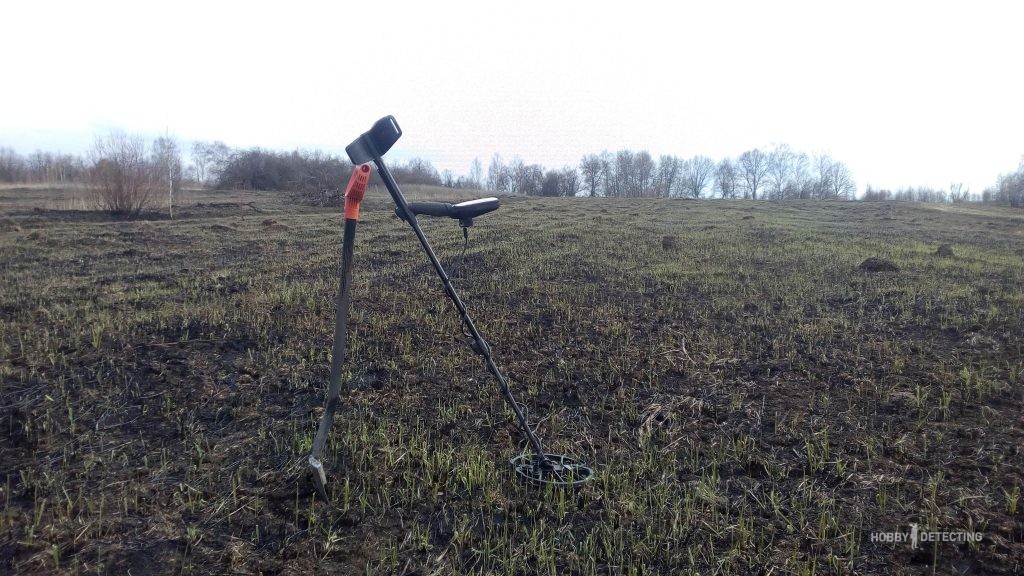
The idea of the experiment.
Stage 1. I take a budget MD, in our case it will be Nokta&Makro Simplex+. I go to abandoned gardens and check the behavior of the MD towards phantom targets. Namely, looped and wrought iron.
Stage 2. I move to a plowed field, a proven place “The bite will be like on the Black Stones of Senya.” And I check the ratio of qualifying finds to the amount of garbage.
Stage 3. I photograph the result, form my own subjective, but not illogical, opinion, and write an interesting note for our readers.
Implementation of the experiment.
I arrived at the place, turned on the device and walked through the abandoned vegetable gardens. Honestly, I didn’t think before that I would ever set myself the task of digging up as many traffic jams as possible. It may look stupid at first glance, but corks are a very good training tool for a novice digger. In my case, I needed to understand the capabilities of MD. What is the optimal depth for targets (plugs)? Does he see small pieces of wire? Again, at what depth?
The place for such testing turned out to be simply ideal. Once upon a time there was a field here, waste land of little use for agricultural crops. Therefore, in the mid-80s, vegetable gardens were planted here for the villagers who lived in apartment-type houses. Everything, as it should be, according to the principle “God, what’s not good for us.” It was a wild time, people in the countryside drank heavily. We have an interesting article on this topic, you can read “Where are the traffic jams from in the field???” So, there was plenty of test material in the soil. There are two good clean signals at each step.
Fifteen minutes of work and I got used to the device. In general, we must pay tribute, the device behaved stably and testing for phantom hardware MD passed a confident four. Not every professional MD can distinguish looped iron at a good depth from the desired copper coin. Sometimes such looped iron turns out to be a very interesting find. The example photo is not from this cop, but as a visual example.

The result of the first stage of testing. I didn’t have to dig for more signals than there were. Phantom iron was also within the normal statistical error. The depth of detection did not cause awe, but this is a budget MD.
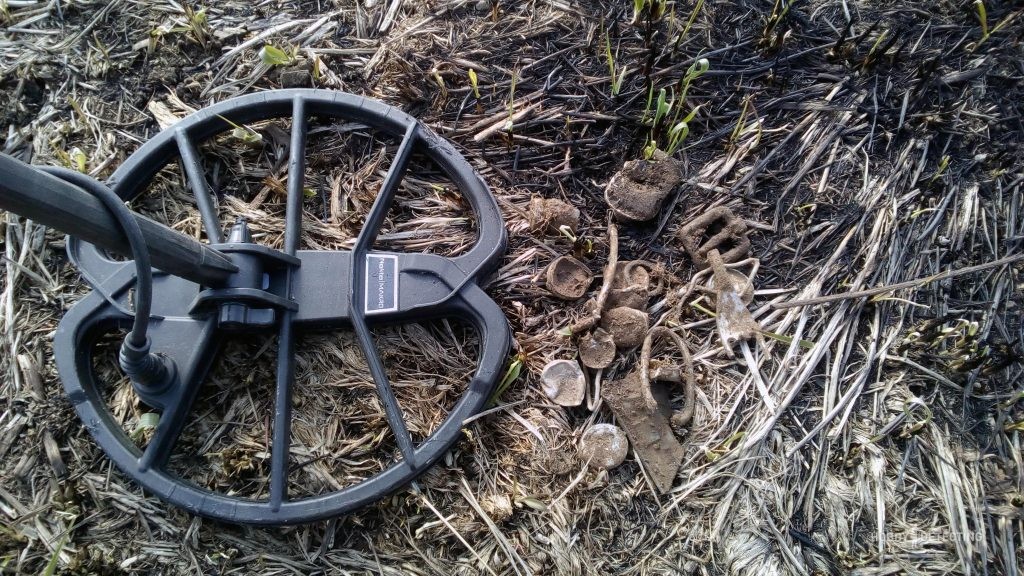
To move on to the second stage of testing, all I had to do was walk about a hundred meters, and here I was in a plowed but not yet sown field. Beauty, and a pleasure. However, this is where something went wrong. The amount of iron being mined has increased dramatically. And it was not only looped black stuff, but also pieces of sheet metal and even just medium-sized pieces of iron. With every piece of iron I dug up, I became sadder and sadder. It turns out that miracles do not happen, and indeed budget metal detectors are very susceptible to wrought iron in plowed fields when deployed quickly. Here, as they say, every cloud has a silver lining; during testing I dug up an interesting horseshoe. Why is she interesting? But could you determine that this horseshoe is a winter type, and for the hind legs of a horse? In general, the find went into the collection.

And I would have been upset by the results of the second stage of testing, but some inner instinct made me look at the display of the device. I look and see that in an incomprehensible and incomprehensible way for me, the “Beach” search mode was shown there. Now, I thought, I could have accidentally pressed it myself. When I went out onto the field, I changed the settings in the menu. I could, definitely could, and accidentally change the “Field” program to the “Beach” program. Everything became clear. Why did the device suddenly become so sensitive to iron? The Beach mode is designed for searching for small jewelry. The developers understand that it is unlikely that there will be spare parts from a potato harvester lying around on the beach. So, at that moment, the inadequate behavior of the metal detector for iron in the field became clear. However, I found a horseshoe. I had to reset the testing results in the field, and after changing the settings, I went for a walk again in search of good finds.
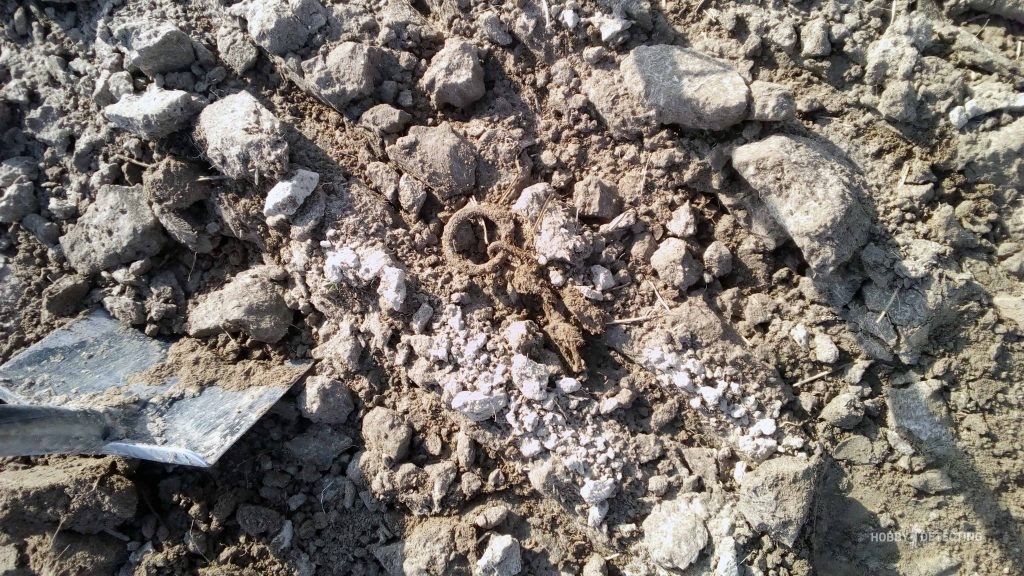
The result of the second stage of testing. Overall, I was pleased with the device. And we even managed to complete the task of one of the previous test trips. Namely, to find the scales. By the way, the signal was clear and confident. The result is attached in the photo. As you can understand, it’s quite a standard set of diggers in a plowed field for one and a half to two hours of digging.

General conclusion.
Honestly, I still don’t understand that very phrase, what does it mean that a more expensive MD helps you dig up less garbage? From a technical point of view, this argument can be understood by hearing it from an American. This is where they have it, many lovers of instrument search only dig signals in the zinc range. And with us, everything that is not ferrous metal can end up being either a rare cross, or specific scales, or a gold wedding ring. And the fact that the detection depth with a budget metal detector is slightly less than that of professional models, so in plowed fields this factor is not so important. The main thing on a plowed field is not depth, but speed. In order to have time to work on as large an area of that same field as possible before the sowing season. Then, a year later, they come back to fresh plowing and dig again, as if in a previously untrodden place.
